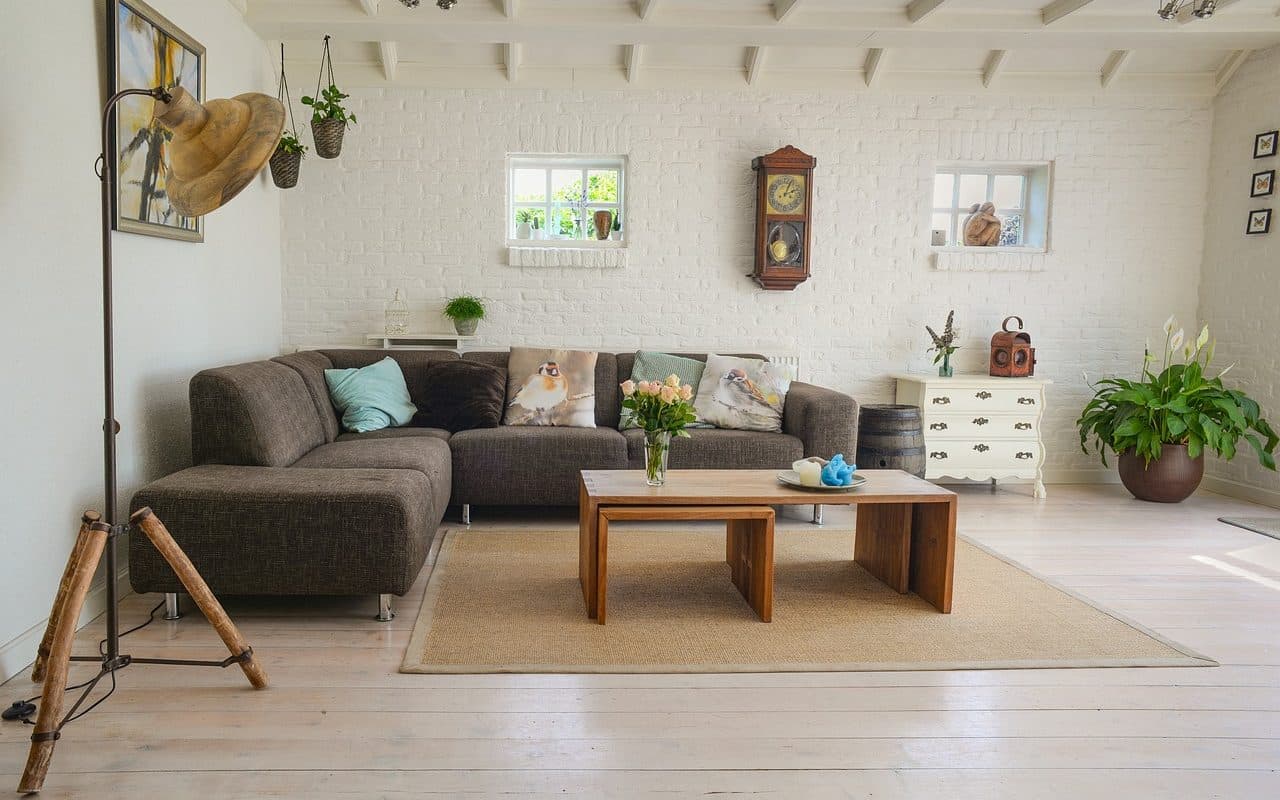Interior design is a constantly evolving field. Every year, new trends emerge and inspire us to create spaces that reflect our personality and lifestyle. For 2023, several trends are already emerging in the world of interior design. Discover the colors, materials and styles that will be at the heart of the concerns of designers and decoration enthusiasts this year.
Colors: towards natural and soothing shades
For colors, the year 2023 will mark a return to basics with shades directly inspired by nature. Earthy tones, such as warm brown or sandy beige, as well as shades of green, will be particularly in the spotlight. These colors provide a feeling of calm and create a warm and welcoming atmosphere in all rooms of the house, from the living room to the bedroom, including the kitchen and the bathroom.
Vegetable and mineral greens
Green continues to dominate our interiors. Many shades of green will be appreciated for their ability to bring a touch of freshness and vitality to our living spaces, ranging from sage green to eucalyptus green to khaki. Green goes perfectly with natural materials like wood, stone and plant fibers.
Earthy colors
In 2023, earthy tones will also be very popular for their warm and comforting appearance. Warm browns, sandy beiges, as well as ochres and sienna will bring a cozy atmosphere to the different rooms of the house. These shades blend easily with materials such as raw wood, ceramic or even leather.
Materials: natural, sustainable and ethical
The trend is to look for environmentally friendly and ethical materials. The choice of materials for interior decoration in 2023 will therefore favor natural and renewable resources, recycled products and artisanal techniques.
Raw wood and plant fibers
Raw wood is an essential material for creating a warm, authentic and ecological interior.. It can be used for furniture as well as for floor and wall coverings. In addition, it harmonizes perfectly with other natural materials such as plant fibers (wicker, rattan, jute), which are also making a notable comeback in our interiors. These fibers are particularly appreciated for their lightness, their robustness and their textured appearance.
Recycling and upcycling
In 2023, recycling and upcycling will continue to gain popularity in interior design. The principle is simple: use existing materials or objects to create new decorative or functional elements. This approach not only reduces our consumption of resources, but also gives a second life to objects that would otherwise have been thrown away.
Styles: the fusion between tradition and modernity
The year 2023 will be marked by a clever mix between tradition and modernity. The decoration styles will be inspired by both the past, with artisanal and vintage influences, and the future, with contemporary and minimalist touches.
Craftsmanship at the heart of decoration
Increasingly, designers and decoration enthusiasts are looking for unique and authentic pieces to personalize their interior. Crafts, whether local or from distant cultures, respond perfectly to this demand by offering objects made by hand, with ancestral know-how. Pottery, woven rugs, embroidered textiles and other handicrafts bring real soul to our living spaces.
Minimalism revisited
The minimalist style remains a key trend in 2023, but it is evolving to adapt to our needs and desires. The emphasis is on functionality, with modular and versatile furniture, as well as aesthetics, with clean lines and quality materials. But minimalism does not mean a total rejection of decoration: on the contrary, it is about carefully choosing a few strong decorative elements and highlighting them.
Space planning: towards more flexibility
In 2023, living spaces will have to be adapted to new lifestyles and the varied needs of occupants. The trend will be towards modular and multifunctional layouts, which allow optimal use of the available space.
Modular furniture
Modular furniture is particularly appreciated for its ability to adapt to different situations and different needs. Whether for the living room, bedroom or dining room, modular furniture (convertible sofas, extendable tables, foldaway beds) offer great flexibility of use while maintaining a modern and elegant design.
Multifunctional spaces
With the evolution of lifestyles, interior spaces must be able to meet several functions at the same time. For example, the kitchen can also serve as a dining and work space, while the bathroom can incorporate additional storage. In 2023, interior designs will therefore have to be designed to facilitate this multifunctionality and make our living spaces more comfortable and practical.
In short, interior decoration in 2023 will be placed under the sign of authenticity, eco-responsibility and flexibility. Natural colors, sustainable and ethical materials as well as styles combining tradition and modernity will be at the heart of trends to create interiors that are warm, aesthetic and functional.







